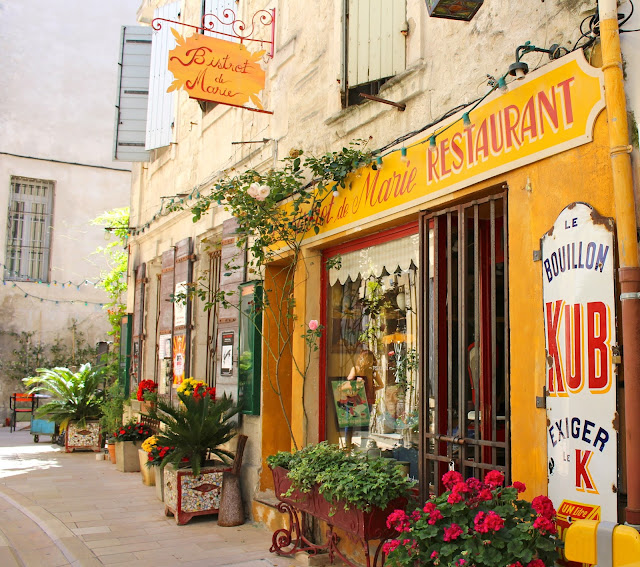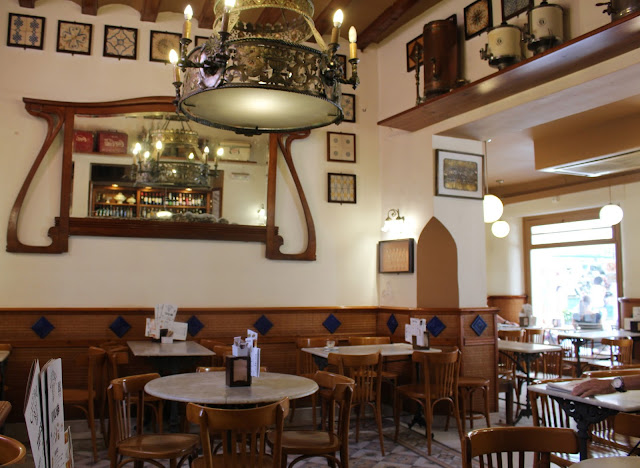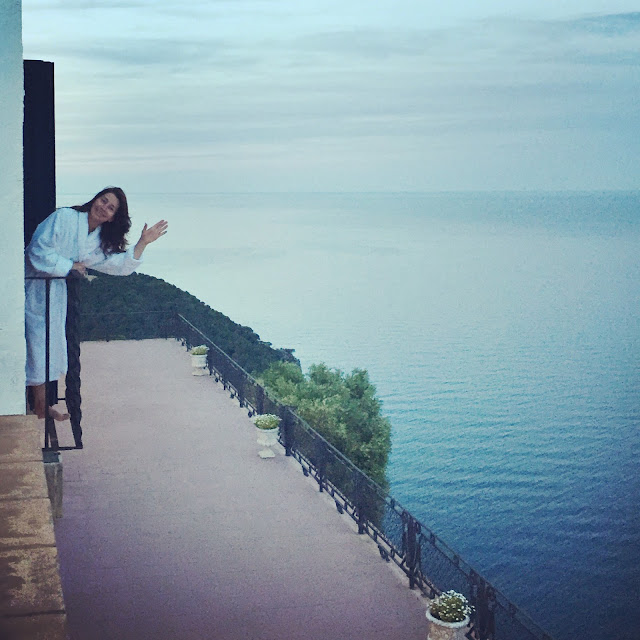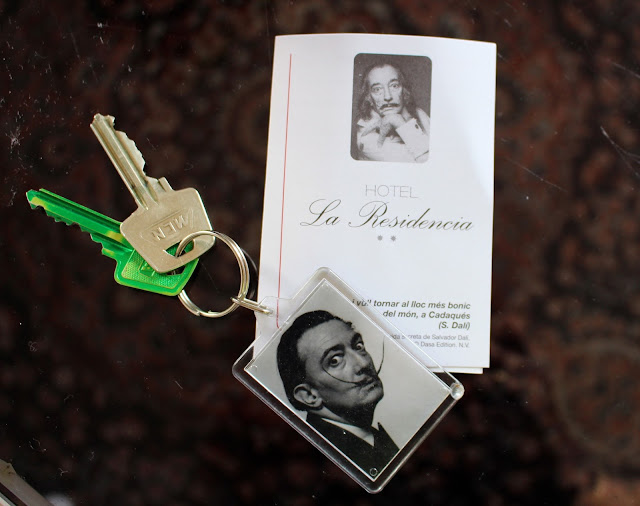We're back in Saint-Rémy-de-Provence (previous installment here) for a few more days to relax and wrap up our trip. The Gounod Hotel where we're staying, steps from the historic center, is so pretty it's hard to leave.
The Gounod, the town's oldest hotel, takes its name from the 19th century composer Charles Gounod who wrote the opera Mireille here. The building was originally a post house in the 1600s and then converted in lodgings.
The vibrant, blue ceiling of the Church of St Martin was rebuilt in 1821 in neoclassical style after collapsing. Only the 14th century bell tower and chapel at the back remain from the original building.

The Nostradamus Fountain commemorates his birth here in 1503.

Our favourite square, Place Favier, and one of our favourite lunch spots, Les Filles du Patissier.

A beautiful, tufted-eared cat naps next to us by the pool.
Lavender is just coming into bloom.
Recycling chic at the Wednesday market—these items are made from the pull-tops of aluminum cans.
Originally created in the 16th century by potters inspired by the Medicis, colourful French Anduze terracotta pottery is one of the most iconic symbols of the French garden. Hand-carved garlands and medallions decorate the sides of these traditional French vases as they have for hundreds of years. The village of Anduze where they are created is about a 90-minute drive from St Rémy and the vases produced here are in seen in abundance throughout Provence.
A statue of Jesus crucified on the cross presides high over the main square in town, a constant reminder to passersby not only of the town's Christian heritage but also that Jesus died for them so they could have eternal life.
Tim tries a fish pedicure and doesn't know who's enjoying it more, him or the fish.

And the news?
We bought an old (c.1860) stone town house right here in the heart of St-Rémy, oui, oui, we did. A petite bourgeois maison as they call it. It's a diamond in the rough that needs complete renovating so our life over the next few years will be travelling between Whistler and St-Rémy and immersing ourselves deep into Provençal life. And that includes Sandi trading in her beloved Chacos (finalement!) for a fine pair of espadrilles. We're not sure what we've gotten ourselves into but we know it's going to be une grande aventure.
The house was previously owned by Christiane Boquet who owned and ran an antique shop in Paris. When she first moved into the house a stray cat often wandered through the property and having a great fondness for animals she adopted it and named the house “Maison du Chat”. We hope to restore this charming painting of the house which was left for us—a reminder of its history and previous guardian.

We've renamed the house “Maison Magnolia” because of the stunning 300-year old magnolia tree that graces the front yard. Sandi envisions a rose garden and fountain in the raised section—Tim is thinking boule court.
The one-bedroom maison des amis (guest house) in the backyard.
Le chambre de maitre (master bedroom).
The fireplace in the master bedroom.
There's even an underground well that supplies water for the garden. How cool is that?!
We've had a great time and will be back in Provence soon but for now are heading to London, Vancouver and home. À bientôt!
***
“If business is business in other parts of the world, here in Provence it is more fun. Let those who complain of the snatch-and-grab methods of commerce in this century, and the rush and hustle of modern life, come and shop with me in a Provençal town. Here there is a lovely leisure in all our doings. The sun shines so gloriously, the sky is so incredibly blue, and the scent of flowers, warmed by the sunshine, so drowsy and intoxicating that there is every inducement to be lazy and leisurely. A stranger without humour might perhaps be maddened by the ways of the Provençeaux, but he whom God has endowed with much patience and a little humour will enjoy them.” - Lady Winifred Fortescue, Perfume from Provence, 1935

































































































